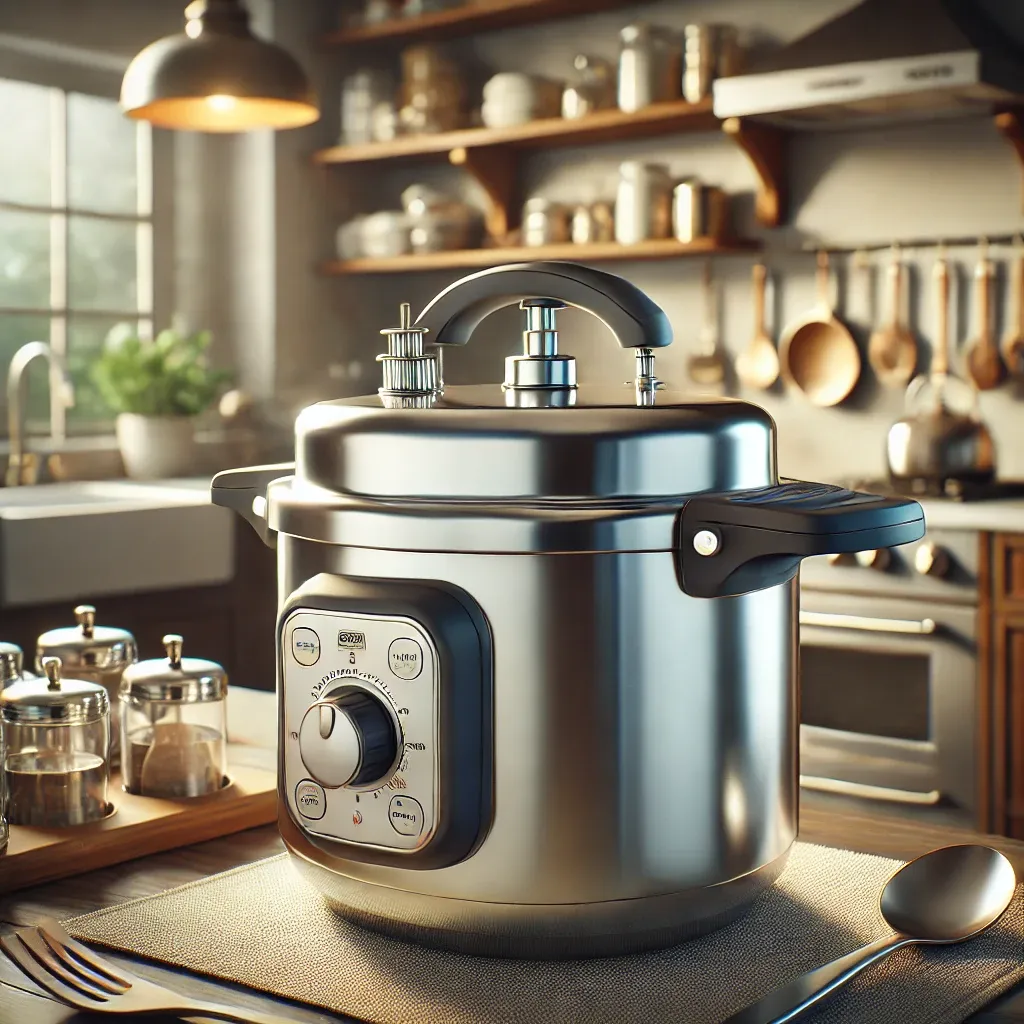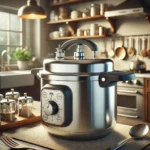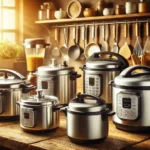Pressure cookers have been around for centuries, revolutionizing how we prepare food by speeding up the cooking process through the use of high-pressure steam. These handy kitchen appliances are particularly known for making delicious, fluffy rice quickly and efficiently. But how exactly do you make a pressure cooker? In this article, we’ll walk you through the process of creating your very own pressure cooker, as well as understanding its mechanics, and exploring its modern applications.
Have you ever wondered how a pressure cooker is made? Learn the process of creating this kitchen essential, as well as the different types, like the pressure rice pot, pressure rice cooker, and the castle pressure cooker. Keep reading to discover everything you need to know!
1. Pressure Rice Pot: A Compact and Efficient Design
A pressure rice pot is a kitchen tool specifically designed for cooking rice quickly under pressure. Unlike standard rice cookers, which cook rice using heat and moisture alone, a pressure rice pot incorporates the use of steam under pressure to cook rice more quickly and evenly. Let’s take a look at how the pressure rice pot is made and why it’s a staple in many kitchens around the world.
Key Features of a Pressure Rice Pot
-
Pressure-Sealed Lid The most critical part of the pressure rice pot is its lid, which is tightly sealed to trap steam inside. This ensures that the rice cooks faster by creating high pressure.
-
Safety Valve The valve releases excess steam when the pressure reaches unsafe levels, preventing any accidents or explosions.
-
Inner Pot This is where the rice and water are placed. It is made from stainless steel or aluminum for durability and easy cleaning.
-
Handle and Locking Mechanism These ensure the lid stays securely in place during cooking.
Materials Required to Make a Pressure Rice Pot
-
Metal body (typically stainless steel for durability)
-
Heat-resistant gasket (to ensure the lid seals properly)
-
Pressure regulator (a key safety component)
-
Lid with locking mechanism
-
Heat-proof handles
The construction process starts with creating the metal body, which is then shaped into a bowl-like structure. The lid is crafted separately and fitted with a heat-resistant gasket, locking mechanism, and the pressure valve. All these parts must work in harmony to ensure the pot functions safely and efficiently.
To assemble, the pot’s body and lid are aligned, and the gasket is placed around the edge of the lid. The handle is attached securely to prevent any accidents during cooking.
Have you ever tried using a pressure rice pot? If not, give it a go—it’s a great way to speed up meal prep!
Learn more about pressure rice pots
2. Pressure Rice Cooker: A Modern Upgrade
Pressure rice cookers are a more advanced version of traditional rice pots. While they work on the same principles of pressure cooking, pressure rice cookers are typically electric and come with additional features like timers, multiple cooking modes, and smart technology. Making a pressure rice cooker requires a few more advanced techniques and components compared to a manual rice pot.
Key Features of a Pressure Rice Cooker
-
Electric Heating Element Unlike the traditional stovetop model, pressure rice cookers have a built-in electric heating element that evenly distributes heat to cook rice faster.
-
Microprocessor Control The microprocessor regulates temperature and pressure to ensure optimal cooking conditions, adjusting for different types of rice.
-
Digital Display Many pressure rice cookers come with a digital screen that allows users to select cooking times, set timers, and choose specific modes (e.g., white rice, brown rice, porridge).
-
Automatic Pressure Control The cooker adjusts internal pressure and steam release based on the type of rice being cooked.
How It’s Made
The making of a pressure rice cooker starts with the production of the inner pot, which is usually made of high-quality non-stick materials for easy cleaning. The main body of the cooker houses the electric components, such as the heating element and the microprocessor control system. The lid, which must withstand high-pressure cooking, is fitted with a sturdy locking mechanism and steam release valve.
Assembly involves combining all these components into a cohesive unit. The cooker is tested for safety and reliability, ensuring that the pressure regulator functions correctly and that the electric components perform at their best.
Benefits of Pressure Rice Cookers
-
Speed The electric nature of the cooker ensures that rice is cooked faster than traditional methods.
-
Versatility With a pressure rice cooker, you can cook a variety of rice types and even experiment with different grains or cooking styles.
-
Convenience The programmable features make it easy to cook rice without constantly monitoring it.
With all these features, the pressure rice cooker is a huge convenience for busy cooks. If you’re looking for a reliable and time-saving appliance, this is the way to go.
Explore more about pressure rice cookers
3. Castle Pressure Cooker: A Unique Design
A castle pressure cooker is a more niche and unique form of a pressure cooker. It gets its name due to its slightly more intricate design, often featuring an external shape resembling a fortress or castle structure. While these cookers might not be as common as traditional stovetop or electric pressure cookers, they offer several advantages in terms of design and functionality.
Unique Features of a Castle Pressure Cooker
-
Decorative Design The most noticeable feature of a castle pressure cooker is its ornate, often regal design. It might feature intricate metalwork or a patterned exterior that makes it a striking centerpiece in your kitchen.
-
Multifunctional Use Besides being a pressure cooker, some models are designed to also serve as slow cookers, making them versatile.
-
Sturdy Construction The body of a castle pressure cooker is often thicker and more durable, which helps it maintain pressure and heat more efficiently.
Construction Process
Making a castle pressure cooker involves intricate craftsmanship, as the design must balance both aesthetic appeal and functional effectiveness. The body is built from high-quality metals, and the outer design often involves a combination of artistic molding and precision engineering to ensure that the cooker functions well under pressure. The inner components, such as the valve and gasket, are similar to those found in standard pressure cookers, but the outer design is what sets it apart.
Why Choose a Castle Pressure Cooker?
-
Aesthetic Appeal If you want a pressure cooker that stands out in your kitchen, the castle pressure cooker offers a blend of function and artistry.
-
Durability The extra thickness of the material means it can handle high pressures and heat over extended periods without damage.
Castle pressure cookers may not be the most commonly found appliance in every kitchen, but they provide a perfect blend of practical use and visual appeal.
Learn more about castle pressure cookers
Conclusion
Creating a pressure cooker—whether it’s for cooking rice, or a more unique design like a castle cooker—requires a combination of careful engineering, the right materials, and safety mechanisms. Whether you’re interested in a pressure rice pot, pressure rice cooker, or something more unusual like a castle pressure cooker, understanding how these devices are made helps you appreciate their functionality and design. Now that you have insight into their construction, you can make an informed decision on which pressure cooker is right for your kitchen. Happy cooking!






